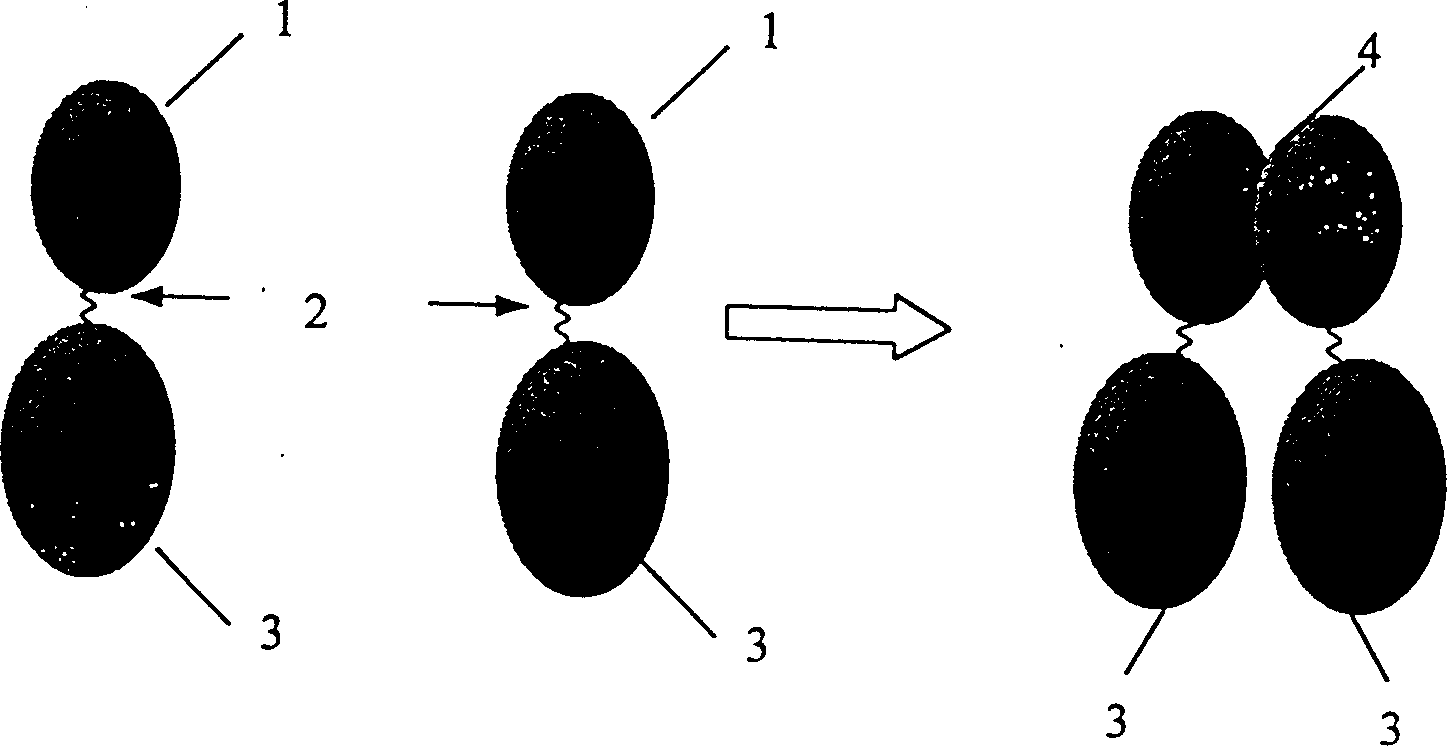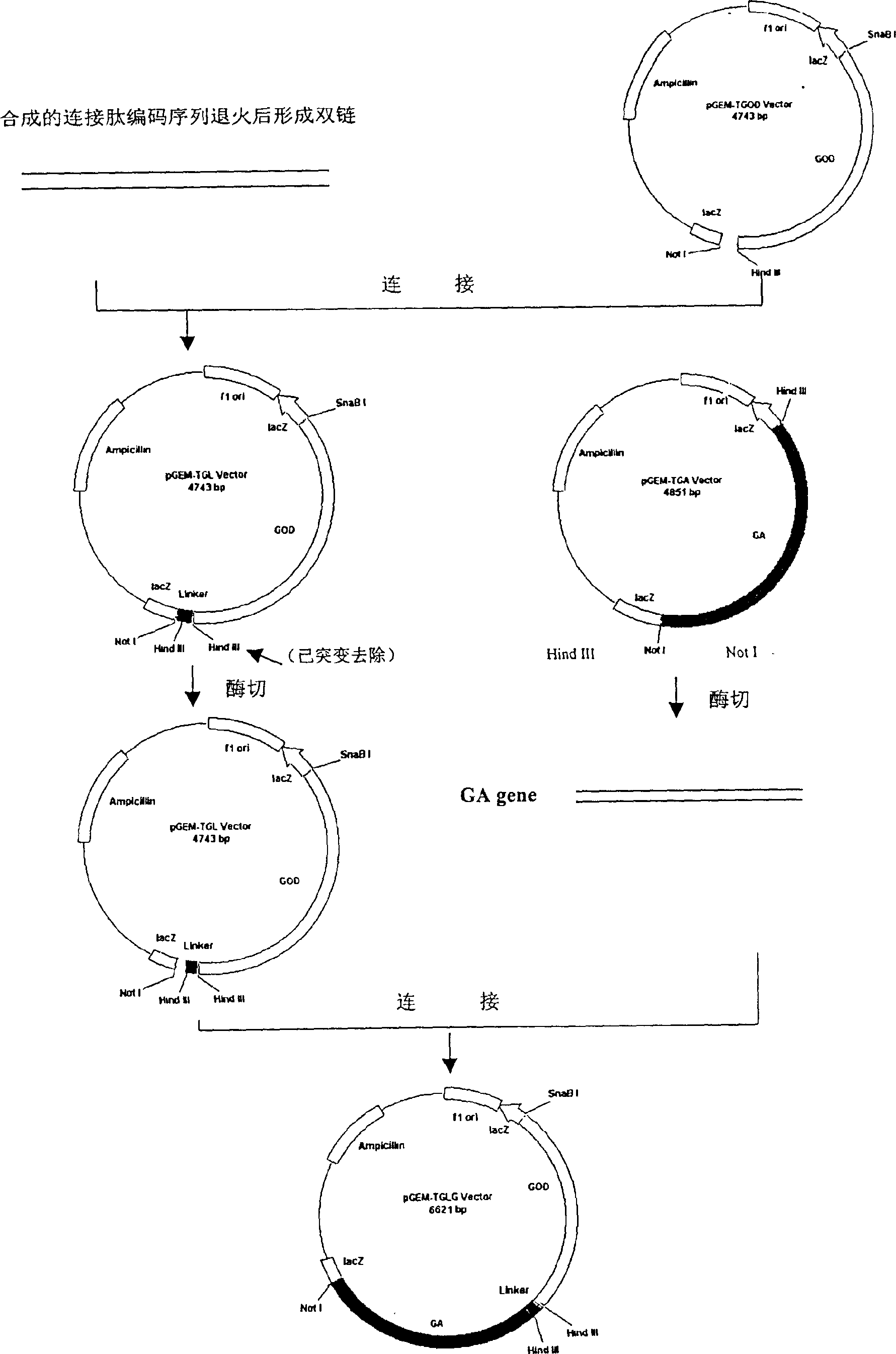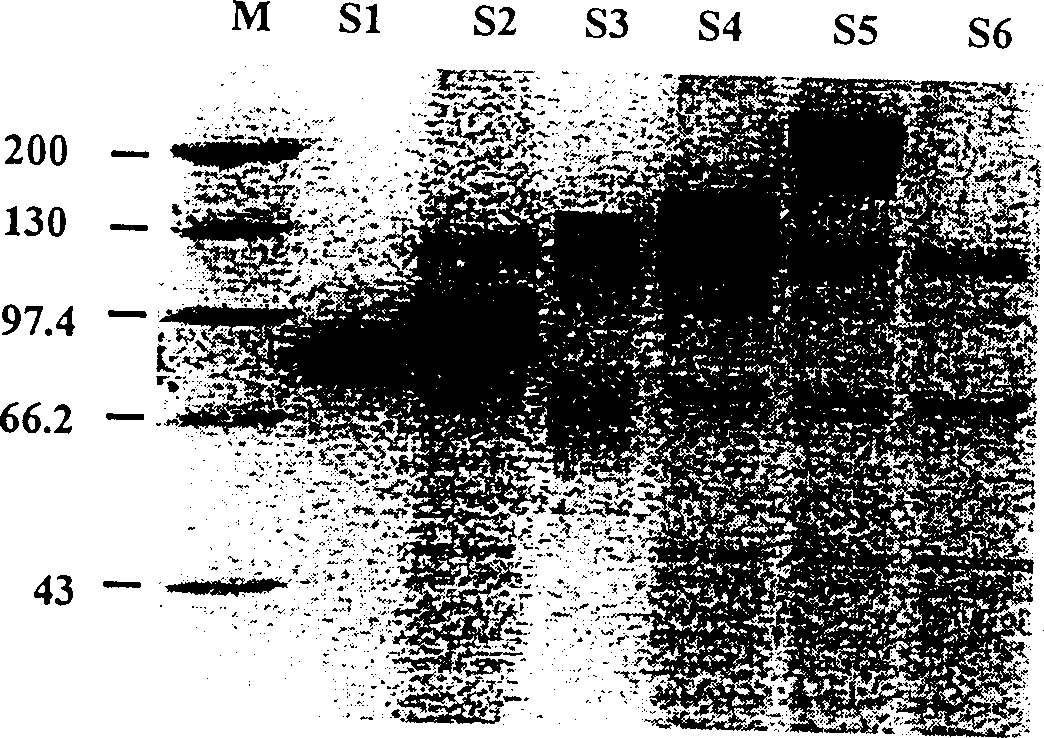Method for catalyzing sequential enzyme reaction by using fusion protein
A technology of fusion protein and enzyme reaction, applied in the field of molecular enzyme engineering and analytical biology, can solve problems such as ineffective results, large differences in affinity, difficult to control distribution and spatial distance, etc.
- Summary
- Abstract
- Description
- Claims
- Application Information
AI Technical Summary
Problems solved by technology
Method used
Image
Examples
Embodiment Construction
[0026] The present invention is described in further detail in conjunction with accompanying drawing:
[0027] "Glucose oxidase-linked peptide-glucoamylase (GLG)" fusion protein prepares maltose sequence enzyme sensor, comprising the following steps:
[0028] 1. Construction of GLG fusion gene
[0029] PCR amplified the GOD and GA genes respectively, and introduced SnaB I and HindIII on both sides of the GOD gene, and introduced Hind III and Not I restriction sites on both sides of the GA gene, and then cloned the GOD and GA genes into the pGEM-T vector respectively Above, the plasmids pGEM-TGOD and pGEM-TGA were formed. The (+) and (-) strands of the synthetic connecting peptide (LP) coding sequence lp are annealed to form a double-stranded oligonucleotide sequence with sticky ends of Hind III and Not I restriction sites at both ends: 5'- AGCTC * .AGC, GGC, TCT, GGT, TCC, GGT, AGC, GGT, TCC, GGC, AAG.CTT , AGC, GGT, GC-3'
[0030] 3'-- TCG, CCG, AGA, CCA, AGG, CCA, TC...
PUM
 Login to View More
Login to View More Abstract
Description
Claims
Application Information
 Login to View More
Login to View More - R&D
- Intellectual Property
- Life Sciences
- Materials
- Tech Scout
- Unparalleled Data Quality
- Higher Quality Content
- 60% Fewer Hallucinations
Browse by: Latest US Patents, China's latest patents, Technical Efficacy Thesaurus, Application Domain, Technology Topic, Popular Technical Reports.
© 2025 PatSnap. All rights reserved.Legal|Privacy policy|Modern Slavery Act Transparency Statement|Sitemap|About US| Contact US: help@patsnap.com



